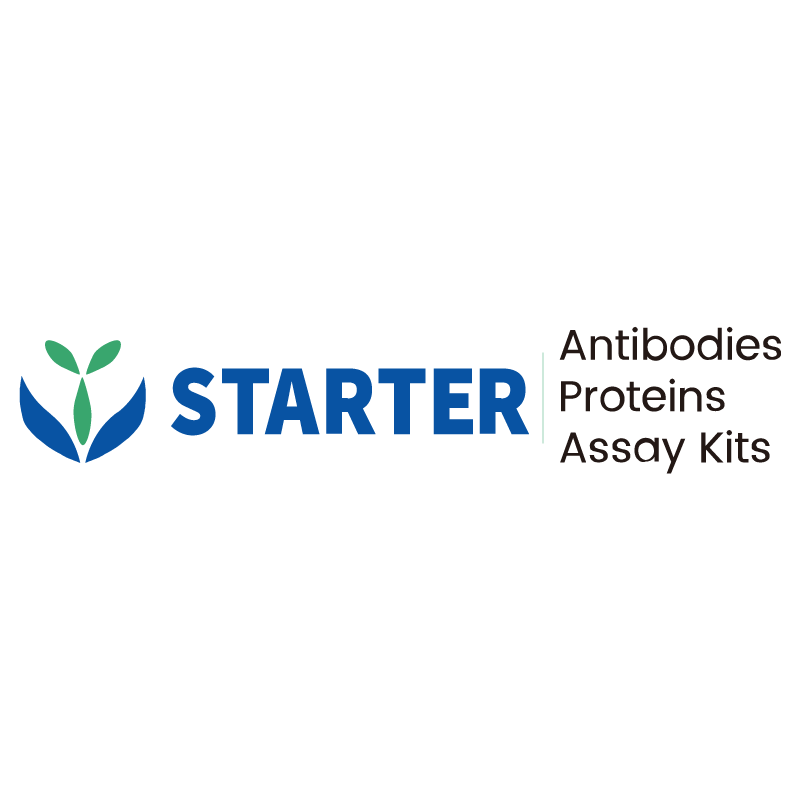WB result of ATG14 Recombinant Rabbit mAb
Primary antibody: ATG14 Recombinant Rabbit mAb at 1/1000 dilution
Lane 1: HeLa whole cell lysate 20 µg
Lane 2: HCT 116 whole cell lysate 20 µg
Lane 3: SK-OV-3 whole cell lysate 20 µg
Lane 4: HepG2 whole cell lysate 20 µg
Secondary antibody: Goat Anti-rabbit IgG, (H+L), HRP conjugated at 1/10000 dilution
Predicted MW: 55 kDa
Observed MW: 58, 68 kDa
Product Details
Product Details
Product Specification
| Host | Rabbit |
| Antigen | ATG14 |
| Synonyms | Beclin 1-associated autophagy-related key regulator; Barkor; Autophagy-related protein 14-like protein (Atg14L); ATG14L; KIAA0831 |
| Immunogen | Synthetic Peptide |
| Location | Cytoplasm, Endoplasmic reticulum membrane |
| Accession | Q6ZNE5 |
| Clone Number | S-2371-15 |
| Antibody Type | Recombinant mAb |
| Isotype | IgG |
| Application | WB |
| Reactivity | Hu, Ms, Rt, Mk |
| Positive Sample | HeLa, HCT 116, SK-OV-3, HepG2, NIH/3T3, Neuro-2a, mouse brain, mouse testis, PC-12, rat brain, rat testis, COS-7 |
| Purification | Protein A |
| Concentration | 0.5 mg/ml |
| Conjugation | Unconjugated |
| Physical Appearance | Liquid |
| Storage Buffer | PBS, 40% Glycerol, 0.05% BSA, 0.03% Proclin 300 |
| Stability & Storage | 12 months from date of receipt / reconstitution, -20 °C as supplied |
Dilution
| application | dilution | species |
| WB | 1:1000 | Hu, Ms, Rt, Mk |
Background
ATG14, also known as Barkor (Beclin 1-associated autophagy-related key regulator), is a 492-amino-acid protein essential for autophagy initiation in eukaryotes. It assembles with Beclin 1, VPS15, and the class III phosphatidylinositol 3-kinase VPS34 to form the PI3K complex I that nucleates isolation membranes and omegasomes, thereby triggering autophagosome biogenesis. ATG14 recognizes membrane curvature via its N-terminal cysteine-rich domain, which binds phosphatidylinositol 3-phosphate to tether pre-autophagosomal membranes, and subsequently promotes STX17-SNAP29 t-SNARE complex assembly to drive autophagosome–lysosome fusion [^3][^8]. Beyond canonical autophagy, ATG14 safeguards mitochondrial integrity and restrains gasdermin-mediated pyroptosis, enabling physiological processes such as hepatic lipid homeostasis and early-pregnancy embryo transport.
Picture
Picture
Western Blot
WB result of ATG14 Recombinant Rabbit mAb
Primary antibody: ATG14 Recombinant Rabbit mAb at 1/1000 dilution
Lane 1: NIH/3T3 whole cell lysate 20 µg
Lane 2: Neuro-2a whole cell lysate 20 µg
Lane 3: mouse brain lysate 20 µg
Lane 4: mouse testis lysate 20 µg
Secondary antibody: Goat Anti-rabbit IgG, (H+L), HRP conjugated at 1/10000 dilution
Predicted MW: 55 kDa
Observed MW: 58, 68 kDa
WB result of ATG14 Recombinant Rabbit mAb
Primary antibody: ATG14 Recombinant Rabbit mAb at 1/1000 dilution
Lane 1: PC-12 whole cell lysate 20 µg
Lane 2: rat brain lysate 20 µg
Lane 3: rat testis lysate 20 µg
Secondary antibody: Goat Anti-rabbit IgG, (H+L), HRP conjugated at 1/10000 dilution
Predicted MW: 55 kDa
Observed MW: 58, 68 kDa
WB result of ATG14 Recombinant Rabbit mAb
Primary antibody: ATG14 Recombinant Rabbit mAb at 1/1000 dilution
Lane 1: COS-7 whole cell lysate 20 µg
Secondary antibody: Goat Anti-rabbit IgG, (H+L), HRP conjugated at 1/10000 dilution
Predicted MW: 55 kDa
Observed MW: 55, 70 kDa


